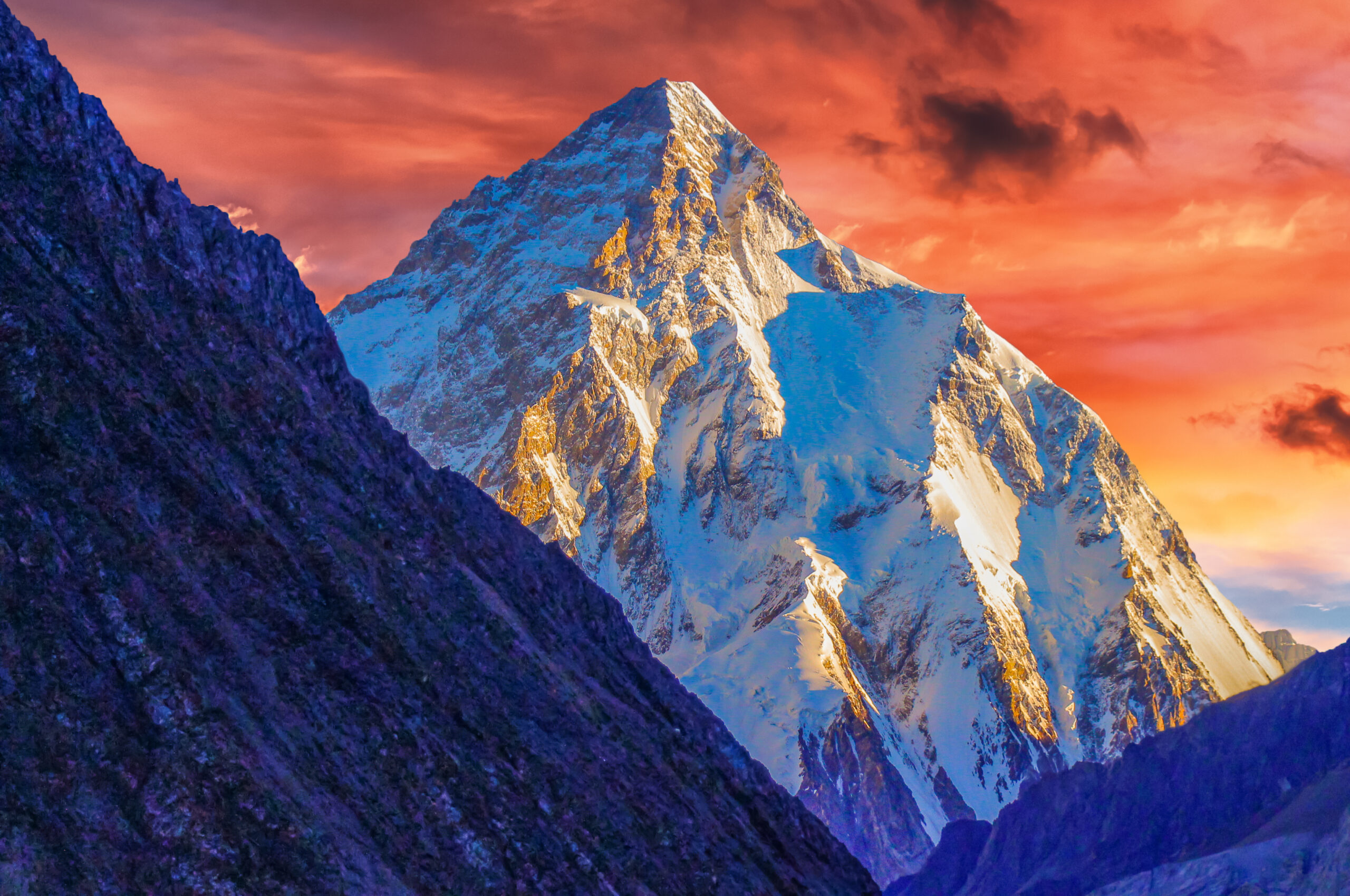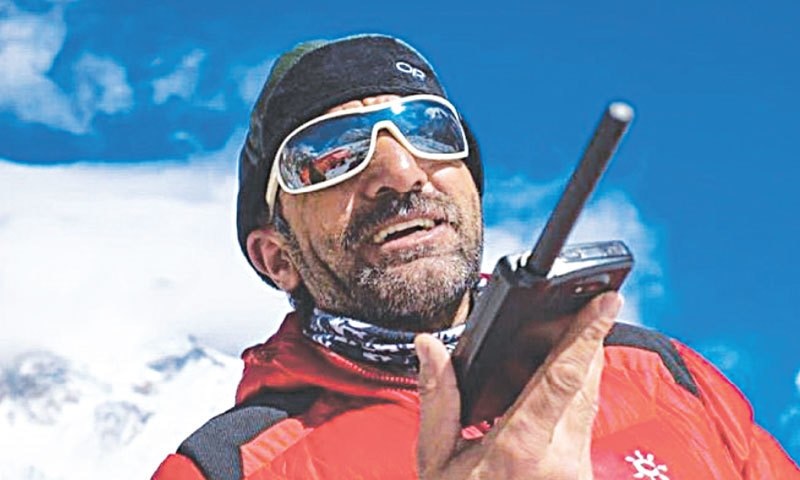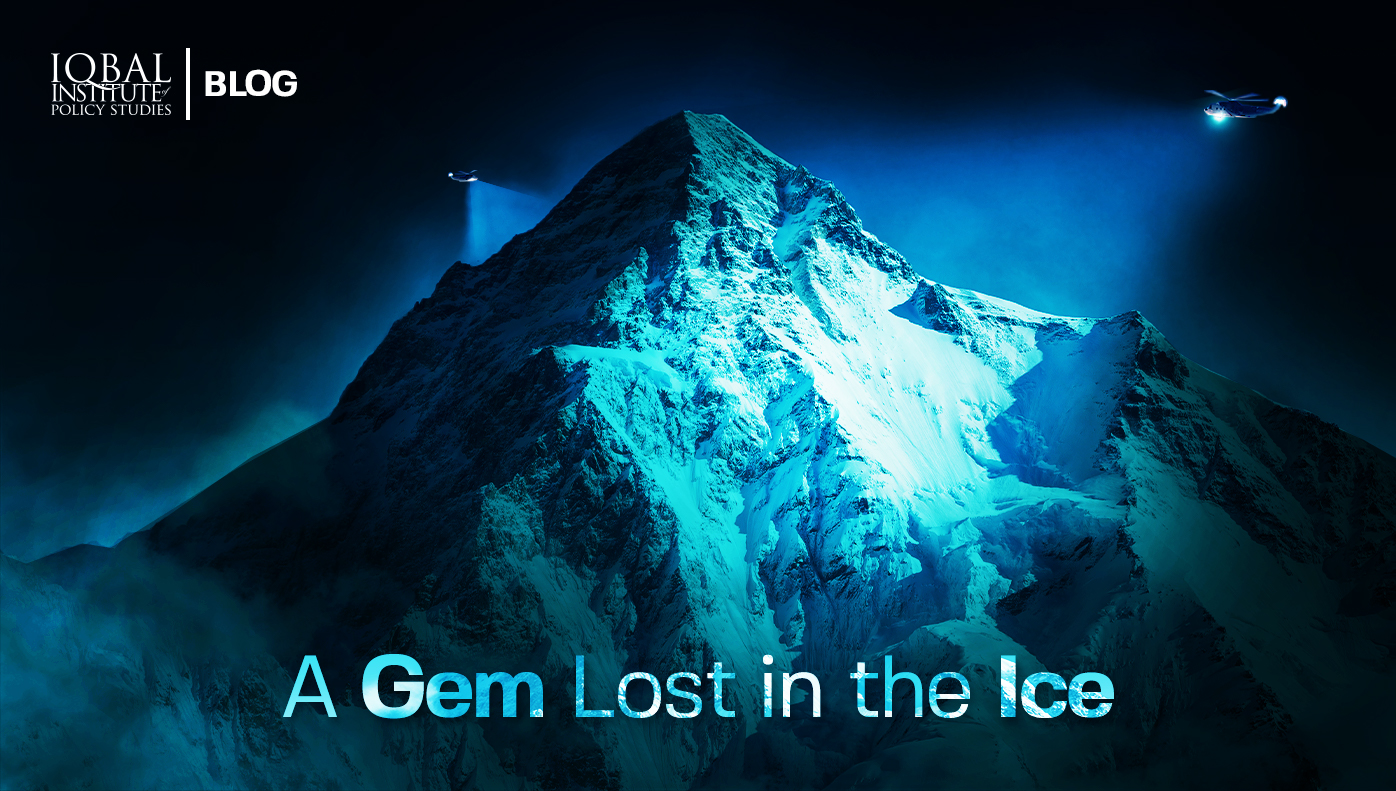Preamble
Mountaineering is a challenging sport which not only tests the perseverance of the mind and body but also helps one in understanding the limits of their will. Besides hosting five of the worlds fourteen highest peaks, Pakistan experiences a large number of local and foreign mountaineers who challenge their minds and bodies to conquer the mighty and grand peaks of mother nature. This blog pays tribute to a Muhammad Ali Sadpara, a lost gem in the ice of the Savage Mountain. The blog tries to convey the meaning of mountaineering and expounds on how Pakistan should pay more attention towards its talent to uplift its tourism sector.
Research Question
1. What makes climbing interesting?
2. What is the history of climbing sports in Pakistan?
3. What are the challenges faced by mountaineers and climbers?
4. How can Pakistan improve its climbing environment for potential enthusiasts?
Introduction
Pakistan is home to one of the most diverse mountain ranges in the world. Besides hosting five of the world’s fourteen highest peaks, every year, a large number of local and foreign climbers challenge their minds and bodies to conquer the mighty and grand peaks of mother nature. To these groups of enthusiasts, mountain climbing is not motivated by money or fame, rather it is the pursuit of realising their true potential and testing the limits of their perseverance which helps them in conquer these heights. The sport is dangerous, requiring substantial funds and highly specialised equipment together with the help of local guides and porters. Pakistan not only enjoys the repeated company of foreign climbers but rich natural talent, which has brought fame to the country many times, continues to wane in light of meagre organisational and governmental support. A beautiful soul lost to the ‘Savage Mountain’ has recently sparked much criticism of the government’s lack of attention towards this thriving tourism sector in Pakistan. Therefore, it is high time that Pakistan undertakes concrete actions for the safety and promotion of this enduring sport.
Mountaineering – A Surreal Experience
As temperatures drop below minus 30 degrees on one of the most difficult terrains on the planet, and the risk of getting trapped in an avalanche gets higher, one is left to ask, why do they even do it? Mountain climbing is a unique experience for the brave-hearted. There are thousands of mountains in the world, all with their own unique terrains, challenges, and excitements. The grandeur, charm, and challenges of high mountains entice many mountaineers, skiers, adventure seekers, and scenery lovers from around the world. Mountaineers will continue to test their minds and bodies by overcoming heights and challenging their own limits. The awe-inspiring peaks which look upon the world as if it were under their command, demand great respect and humility from those who wish to rise above them. Although many have lost their lives in pursuit of conquering these heights, the challenge and perseverance required from the journey have continued to intrigue the most enthusiastic minds and bodies of our time. The sport is no doubt a dangerous one, but those who wish to rise above the everyday crowd, do not consider any obstacle unconquerable.
Mountains of Pakistan
The Northern Areas (Gilgit – Baltistan) of Pakistan is home to some of the highest peaks in the world, making it an exciting place to undertake mountaineering expeditions. Five of the fourteen highest and toughest peaks in the world, those above the 8000 meters mark, include K2 (8611m), Nanga Parbat (8125m), Gasherbrum No. I (8068), Broad Peak (8047), and Gasherbrum No. III (8035m). Besides these five, there are many which are in the range of 5000m and 7000m. Although the K2 is the second-highest peak in the world, it is considered one of the most difficult and the most dangerous peaks to conquer. It has long been known as the ‘Savage Mountain’ after a US mountaineer, George Bell, referred to it as so in 1953 (BBC News, 2021). Many have attempted to climb the mighty K2 over the decades, with the first success being made in 1954 by an Italian Karakoram expedition (Aadil Farooq, 2020). The Pakistani Karakoram Range was not well documented before this expedition and was later termed as more difficult compared to the Himalayas in Nepal.
The remoteness of the peaks from the nearest village in Gilgit-Baltistan means that climbers are far from ground support and have a thin chance of rescue in case something goes wrong. But this does not stop mountaineers from around the world to try and conquer these inhospitable peaks in the most dangerous winter season. The Karakoram and Himalayas have always had great appeal for local as well as foreign mountaineers. As winter expeditions are getting more attention these days, a whole community of guides and porters has emerged. These porters and guides lack advanced institutional setup but have mastered the skill of climbing and handling of modern equipment. Local legends like Nazir Sabir, first Pakistani to summit the Everest, and Muhammad Ali Sadpara, first Pakistani to summit the Nanga Parbat in winter, have brought prestige to the Pakistani nation through their efforts.
 The Lost Gem from Sadpara
The Lost Gem from Sadpara
“Your heart needs to be in love with the mountains”, replied a beaming Muhammad Ali Sadpara when asked what it takes to be a mountaineer in 2016 (Dawn, 2021). The only Pakistani climber to have climbed eight of the fourteen 8000-metre peaks, rose to fame when he made the first-ever winter summit to Nanga Parbat in 2016. The man remained largely hidden from the public eye until it became known that he had been crucial for the success of the summit. Born on Feb 2, 1976, the naturally talented climber hails from a village called Sadpara near the Skardu Gilgit-Baltistan region. The area is famous for its porters who help foreign climbers in their expeditions and usually are the sole reason why any such expedition is successful. Due to the unavailability of funds, Sadpara climbed his first 8000-metre peak in 2006 without proper clothing and secondhand gear which was repaired. From there on there was no looking back for the extremely enthusiastic and high-spirited climber who continued to conquer one peak after the other. But after reports that Sadpara, along with John Snorri of Iceland and JP Mohr Prieto from Chile, went missing after successfully summiting K2, search and rescue operations have gone underway, but with zero luck. This unfortunate event has caught the attention of the nation and calls for supporting such porters and guides, who serve as the backbone of climbing expeditions.
 How to Promote Mountaineering in Pakistan
How to Promote Mountaineering in Pakistan
There is a need to promote and cultivate mountaineering and outdoor culture. There is a lot of potential in Pakistani youth and most of those who wish to undertake such expeditions are withheld due to a lack of resources and funds. Summiting a peak is often a source of pride and honour for an individual and his country. Programs which promote mountaineering expeditions are needed to encourage young athletes to enter this sport. Although the risks are many, collaborations with international organisations coupled with government funding can help climbers achieve their targets and restore Pakistan’s image on the global stage. Joint ventures with international mountaineers, who are better equipped and funded, can also help in increasing interest in the sport along with providing valuable learning experiences for local climbers and mountaineers. Lastly, since mountaineering is a dangerous sport, proper advice and coordination on mountaineering-related matters is essential to protect future climbers from any avoidable incidents.
Conclusion
Pakistan has lost one its most prized gem in the world of mountaineering sports. The only person to summit the Nanga Parbat in winters and earn fame and glory for Pakistan, Muhammad Ali Sadpara, has now become a victim to the mighty K2. His loss is a great blow for young mountain climbers, but ambitions are still high and efforts on part of the government and different organisations are providing hope that one day, people like Sadpara will be better equipped and supported to tackle the challenge of mountaineering. Not only will this bring back fame and glory to Pakistan, but it will also subsequently boost the tourism sector of Pakistan and help future mountain climbers in their expeditions.
Key Takeaways
-
Mountain climbing is not motivated by money or fame, rather it is the pursuit of realising one’s true potential and testing the limits of their perseverance which helps one conquer these heights.
-
A beautiful soul lost to the ‘Savage Mountain’ has recently sparked much criticism of the government’s lack of attention towards this thriving tourism sector in Pakistan.
-
Mountaineers will continue to test their minds and bodies by overcoming heights and challenging their own limits.
-
The Northern Areas (Gilgit – Baltistan) of Pakistan is home to some of the highest peaks in the world, making it an exciting place to undertake mountaineering expeditions. Five of the fourteen highest and toughest peaks in the world, those above the 8000 meters mark, include K2 (8611m), Nanga Parbat (8125m), Gasherbrum No. I (8068), Broad Peak (8047), and Gasherbrum No. III (8035m).
-
K2 has long been known as the ‘Savage Mountain’ after a US mountaineer, George Bell, referred to it as so in 1953.
Bibliography
Aadil Farooq, K. S. (2020). The Lure of Frozen Summits. Retrieved from The News on Sunday: https://www.thenews.com.pk/tns/detail/599436-the-lure-of-frozen-summits
BBC News. (2021). Nepali climbers make history with winter summit of K2 mountain. Retrieved from BBC: https://www.bbc.com/news/world-asia-55684149
Dawn. (2021). Muhammad Ali Sadpara: Porter, family man and tough as nails mountaineer. Retrieved from Dawn: https://www.dawn.com/news/1606183


Leave a Reply